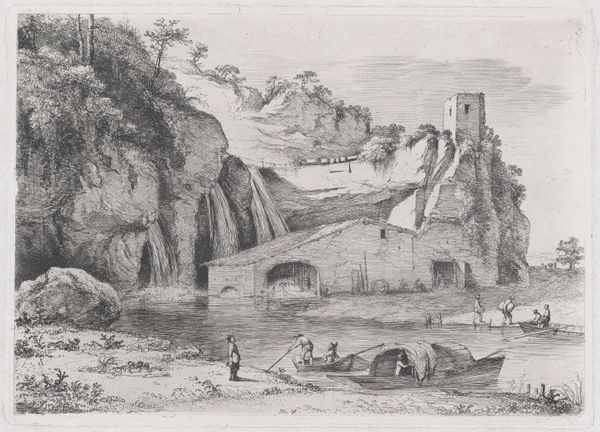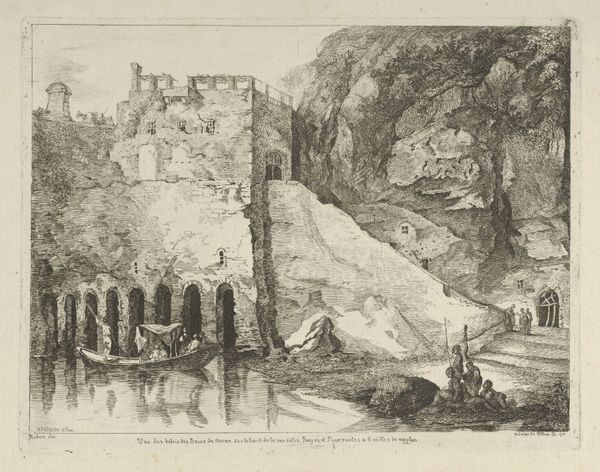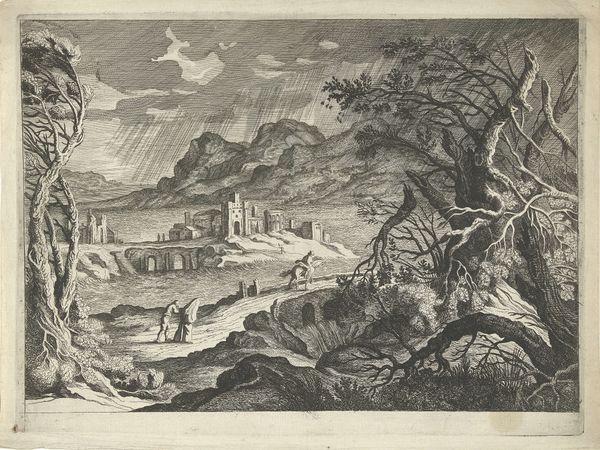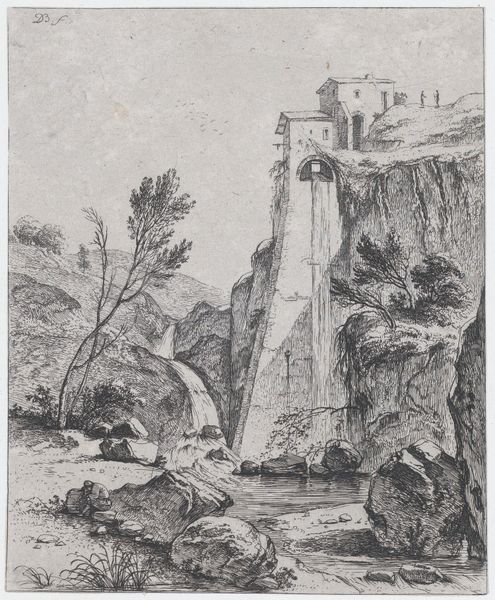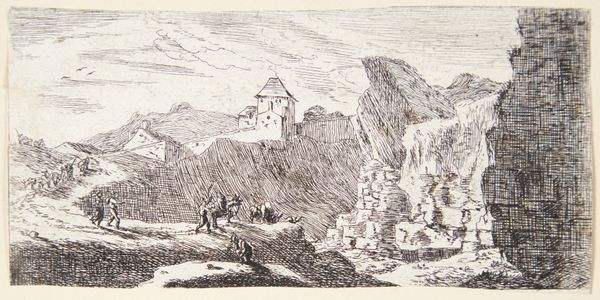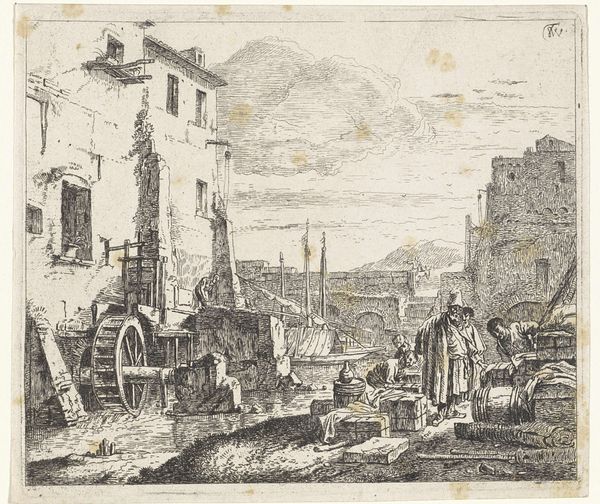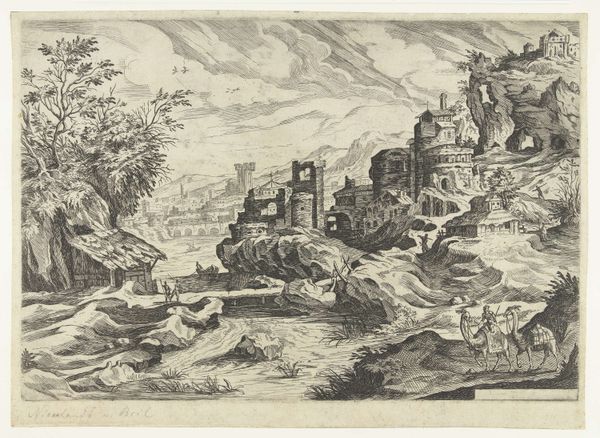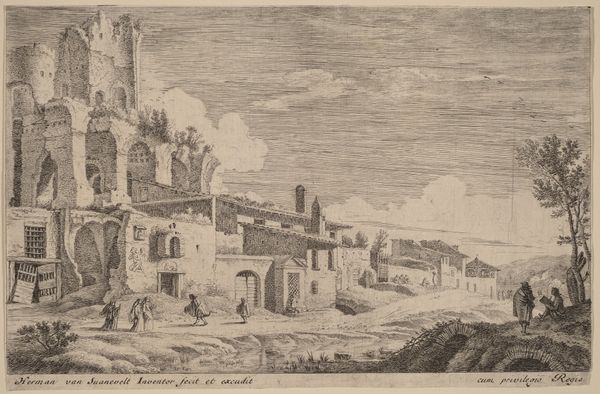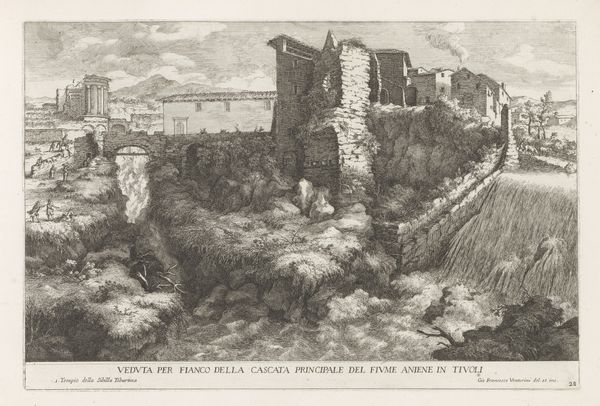
drawing, paper, ink
#
drawing
#
baroque
#
dutch-golden-age
#
landscape
#
paper
#
ink
#
cityscape
Dimensions: height 110 mm, width 139 mm
Copyright: Rijks Museum: Open Domain
Govert van der Leeuw made this print, "City with Waterfall," in the Dutch Republic, probably in the 1670s. It's an etching, meaning that the artist drew into a wax ground on a metal plate, and then bathed the plate in acid. The acid bites into the exposed metal, leaving behind fine recessed lines. Ink is then pressed into these lines, and the image transferred to paper. The material properties of metal, acid, and ink allow for incredible detail, as you can see in the depiction of the waterfall and the distant buildings. Note the dramatic clouds. Through a skilled application of hatching, van der Leeuw has given the scene a tangible atmosphere. Printmaking was a very democratic medium. Unlike painting, prints could be made in large numbers and sold relatively cheaply. It's interesting to imagine how this image of a somewhat fantastical city would have circulated, bringing a bit of wonder into everyday life. Prints like this are a reminder that art can be made for the many, not just the few.
Comments
No comments
Be the first to comment and join the conversation on the ultimate creative platform.

